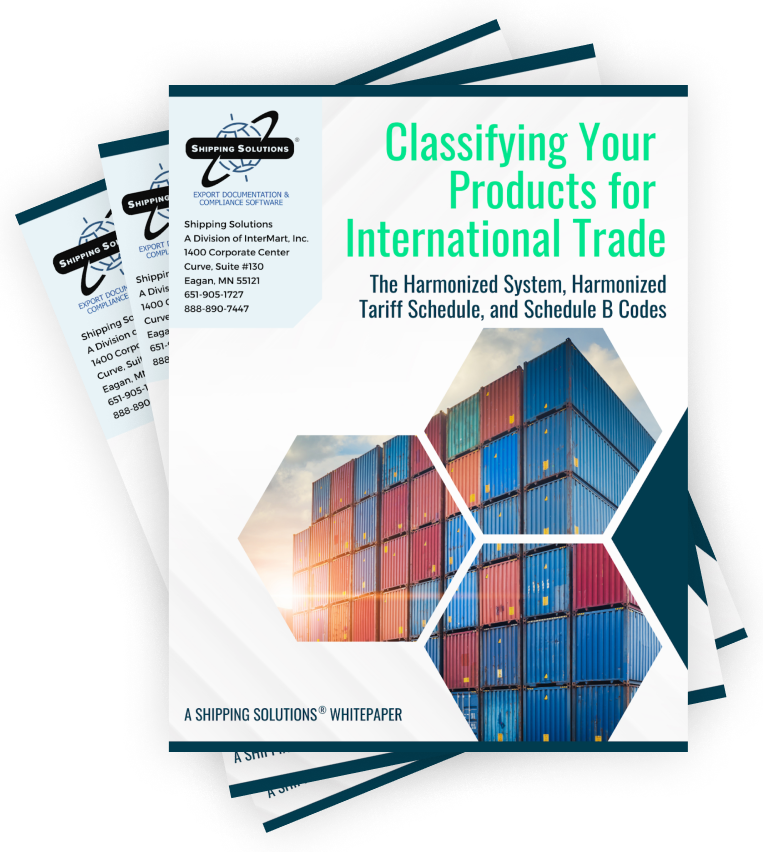The International Trade Blog Import Procedures
What's So Important about the Harmonized System Classification?
On: January 4, 2021 | By: Hank Selby | 4 min. read
 For those of us who have been in the international trade arena for a while, the subject of product classification has always been interesting and, often, quite confusing.
For those of us who have been in the international trade arena for a while, the subject of product classification has always been interesting and, often, quite confusing.
When I started in this business more than 20 years ago, there was no single system used to classify imports worldwide. The United States used the Harmonized Tariff Schedule of the U.S. (HTSUS), Europe generally used the Brussels Tariff Nomenclature, and many other countries had their own unique systems.
Sound confusing? It was!
In 1983, under the auspices of the World Customs Organization (WCO), most of the major trading countries of the world agreed to a single numbering system, which became the Harmonized System (HS). This system went into effect Jan. 1, 1988. If the rules for classification are followed correctly, the international trade community can now classify all products into the system, and the first six digits of the numerical classification will be the same in all 175-plus countries that are WCO members.
While the WCO has made the classification system more consistent from country to country, it doesn't relieve importers of the responsibility to classify products correctly.
Classifying Your Products for Import
With the passage of the Customs Modernization Act in 1993, the U.S. government changed the rules governing classification of products being imported into the United States. Under the concepts of informed compliance and reasonable care, it is now the legal duty of importers of record to properly classify all goods imported into the customs territory of the United States. In the full interpretation and application of the legal concept of reasonable care, importers are responsible for the accuracy of each classification used for their imported products.
In most cases, importers rely on their customs broker to classify their products. In cases where the broker does not fully understand what the product is, the broker is required to ask the importer. However, most brokers simply fax a page from the HTSUS to the importer and ask the importer to pick the correct classification.
Sound familiar? It should. I recently surveyed customs brokers in my area and all of them said they use this approach. These brokers think this method transfers responsibility to the importer. They are entirely correct, but not for the reason they think! It was the importer's responsibility all along.
So what's the law-abiding importer to do? Obviously you should do a comprehensive review of all of your classifications post-entry and also insist on providing your broker with classifications of all new products being entered. However, this road is not as easy as it may seem.
How can you be sure you are coming up with the correct classification? Of course, you can look at the HTSUS book and see if the classification your broker has given you appears to match your product description. There's one small problem with this: The definitions used in the HTSUS are based on the Harmonized System, and they are not necessarily the commonly used definitions.
The dictionary definition of an item is not necessarily the HS definition. In order to really be sure that you understand the meanings of definitions in the HS, you need to either own or have access to the Explanatory Notes (EN) to the Harmonized System. For more information, go to the WCO website.
 Using the resources of the EN and the HTSUS, you should now be prepared to classify your products and document for U.S. Customs that you used reasonable care. You must become familiar with the General Rules of Interpretation found in the EN, as well as the additional U.S. Rules of Interpretation.
Using the resources of the EN and the HTSUS, you should now be prepared to classify your products and document for U.S. Customs that you used reasonable care. You must become familiar with the General Rules of Interpretation found in the EN, as well as the additional U.S. Rules of Interpretation.
What's So Important about Classification?
First, it's the law! You are responsible for the correct classification on every entry submitted to U.S. Customs in your name.
Secondly, there's a financial impact. Let's assume you have been using wrong classifications. Now, for compliance purposes, you ask your broker to make corrections to previous entries going back five years, as required by law. Several things may happen; none of them are good.
1. There Is No Change in Duties
Hopefully customs will not issue a penalty for failure to properly classify. You have spent a lot of time and effort to redo what should have been done correctly from the start.
2. You Have Overpaid Duties
Unfortunately, if you fail to correctly interpret the law, you cannot protest, and you will receive no refund.
3. You Have Underpaid Duties
You will have to make a prior disclosure, pay the difference in duties owed up front, and wait for customs to decide on the amount of interest due and whether or not there will be fines and penalties assessed.
If it seems like this is a lot of work, it is! However, this is one of the legal requirements of doing business as an importer. It's no different than your responsibility as an individual to file a tax return. So go out and assemble the resources listed above, institute a compliance program and document reasonable care.
This article was first published in December 2001 and has been updated to include current information, links and formatting.
About the Author: Hank Selby
Hank is manager of international logistics and compliance at Reynolds/Pactiv.


